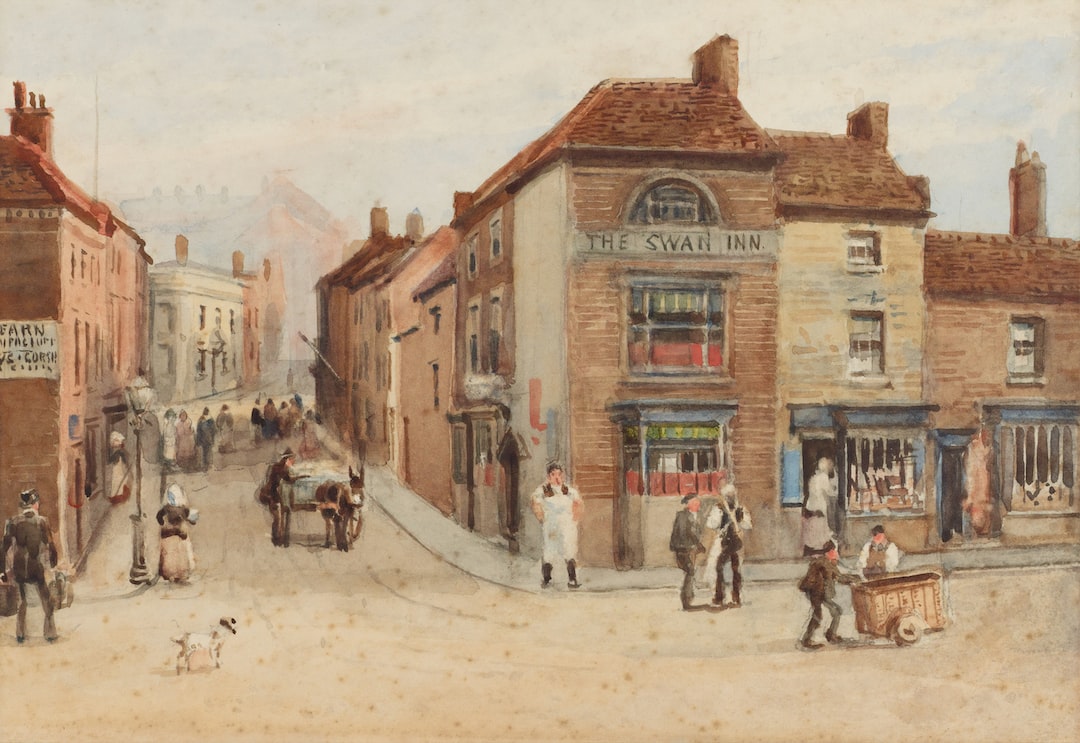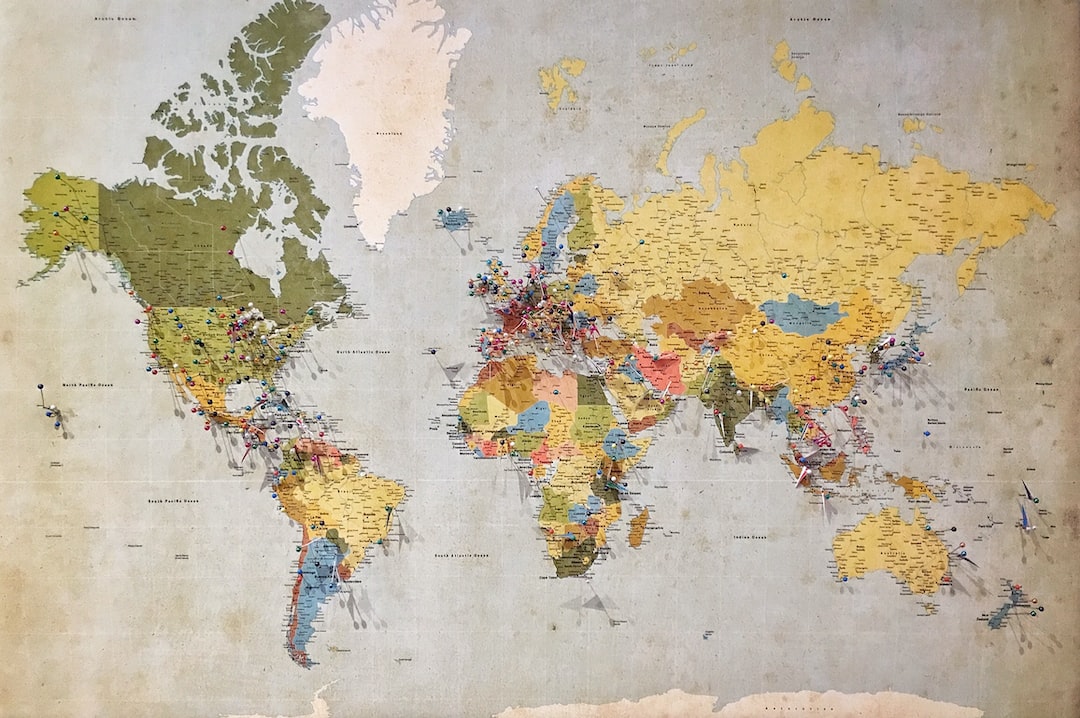Alright, so let’s kick things off with a vibe check. You’re cruising through your IG feed and bam 🚀—you see this sick artwork. It’s not just pretty colors or aesthetic vibes; it’s a whole mood. This piece is saying something. Maybe it’s about climate change 🌍, gender equality, or mental health. Whatever it is, you’re vibing with it hard. That’s the power of art and design today—it’s not just about looking good; it’s about making change happen. Imagine if your doodles or your next digital art piece could shift perspectives or even start a movement? That’s what we’re diving into today: How you can use your artistic juice to actually make a difference in the world 🌟.
Art & Design: The Ultimate Change-Makers 🖌️
Art isn’t new to the game of influence. Throughout history, it’s been a sneaky beast, influencing minds and sparking revolutions. Picasso did it with “Guernica.” Shepard Fairey did it with that iconic Obama “Hope” poster. And now, it’s your turn. Whether you’re sketching, painting, snapping pics, or rocking your design skills on Adobe Illustrator, your art can be powerful AF. It’s all about knowing how to channel that energy for social causes that you care about.
The Evolution of Art as Activism 🎨
So, let’s rewind a bit back to when art was mostly about flexing skills or depicting royalty. 😴 Fast-forward to the 19th and 20th centuries, and art started to talk back. Remember the Impressionists? They were basically the rebels of their time, breaking all the boring traditions and pushing boundaries. Then things heated up during the Civil Rights Movement. Propaganda posters, protest signs, and mural art started becoming tools to voice out issues. This wave of activism didn’t just stop back then—it evolved and morphed into what we see today. Now, artists like Banksy, Ai Weiwei, or even your fave IG-follow, are using art to challenge the status quo, one swipe at a time.
The Digital Age of Art Activism 🚀
Fast forward to now, where everything is supercharged by digital platforms. The internet has cracked the world of art wide open, making it more accessible and global than ever before. Whether you’re sharing on TikTok, Instagram, or even Tumblr (RIP), your art can literally go viral overnight. And with virality comes impact. You’re not just posting for likes; you’re posting to make waves 🌊. You can create a whole movement with one piece and a well-timed hashtag campaign. And the best part? You don’t need to be a famous artist to go global. Your voice matters, and digital spaces are the perfect platforms to amplify it.
What Social Causes Are We Looking At? 📣
Alright, now that you’re hyped on the potential, let’s talk about which causes are prime for a creative takeover. Social equality, climate change, mental health awareness, LGBTQ+ rights—there are so many arenas where your art can slap. And it doesn’t stop there. Issues like animal rights, immigration, and education reform are also fertile ground for creative disruption.
Climate Change: The Planet Needs You 🌍
Let’s start with the big one—climate change. Our planet is taking Ls from every direction, and it’s on us to turn that around. A documentary or a stat sheet might not grip people, but a compelling piece of art? That has staying power. Whether it’s a visual representation of rising sea levels or a piece on plastic pollution, your creativity can serve as a wake-up call. Just look at the rise of eco-artists using their platforms to shed light on the crisis. It’s happening, and you can be a bigger part of that movement.
Mental Health: End the Stigma 🧠
Next up, mental health—a topic that’s getting some well-deserved spotlight lately. We might be breaking the stigma bit by bit, but there’s still a lot of work to do. Art has a special way of capturing the complexity of mental health issues—whether it’s through abstract pieces that echo anxiety or social media campaigns that highlight therapy journeys. Your art can be the thing that makes someone feel seen, understood, or even encourage them to seek help. That’s more than just cool art—that’s changing lives.
Social Equality: Level Up the Playing Field ⚖️
And of course, social equality is a cause that’s just as relevant now as ever. Whether it’s about race, gender, or socioeconomic status, art has the uncanny ability to spotlight inequality and bring conversations to the table that people might otherwise avoid. We’ve all seen how powerful an image or a short video clip can be when it comes to social justice. Your artistic talents can help to dismantle stereotypes, magnify marginalized voices, and create the visual culture that supports equality. Your art can—as it should—serve as a megaphone for those who aren’t heard enough.
How to Transform Your Art into Activism 🎨💥
Alright, so you’re feeling the passion—mad respect. But how do you actually make the leap from ‘art for art’s sake’ to ‘art as activism’? First off, there’s no one way to get it done (thank god for that), but here are some key strategies to consider.
Pick a Cause That Resonates with You 🎯
Here’s the thing: to make an impact, you’ve got to actually care about the cause. Don’t just hop on the latest bandwagon because it seems trendy. Dig deep and find what actually makes you tick. Whether it’s feminism, animal rights, or anti-bullying campaigns, your passion will show in your work. And trust us, people can tell when art comes from a genuine place versus when it’s just for clout. So, ask yourself—what breaks your heart? What revs you up? That’s your cause.
Educate Yourself 🧠
Look, no one’s expecting you to be an expert overnight, but if you’re going to be vocal about a cause, you need to back it up. Do your homework. Dive into articles, documentaries, follow experts who are in the trenches, and learn from them. Knowledge isn’t just power; it’s your best weapon in making sure your art is as impactful as possible. Plus, when you’re “in the know,” your art will have more depth and will resonate on a much deeper level with your audience.
Get to Work & Create 🚀
Once you’ve got your cause and your research on lock, it’s time to get that content out into the world. This is the hardest part but also the most rewarding. Whether you’re creating murals, posters, digital art, animations, or even installations—just start. Pro tip: try to evoke strong emotions, whether it’s anger, empathy, or even humor. That’s how you make your work impossible to ignore. And remember, not every piece has to be ‘in your face’ activism—sometimes subtlety is just as powerful.
Collaborate & Build a Movement 🤝
You’re not alone in this. One of the most incredible things about making art today is how easy it is to collaborate with others—especially if you’re all about the same cause. Whether you team up with other artists, organizations, or influencers, collaborations can amplify your message far beyond what you could do alone. Imagine your designs plastered on merch for a charity campaign or featured in an awareness-boosting event—those partnerships can extend your influence far beyond your immediate circle.
Leverage Social Media’s Full Power 📱
Here’s where the game gets real crazy. Leverage the power of hashtags, social media challenges, and even collaborations with influencers. TikTok’s For You Page can take your work from 0 to 100 real quick. The key is to be strategic. Engage with your audience—respond to comments, build a community, and keep your content consistent but fresh. Your goal is to create a space where people feel compelled to follow and get behind the cause you’re pushing for. And absolutely never underestimate the power of memes—they do more heavy lifting for social causes than you might think.
List It Out: Easy Tips for Creating Art That Matters 💡
Quickly here’s a checklist to keep your momentum going:
- Choose a Cause: Find what you’re genuinely passionate about.
- Educate Yourself: Immerse in the issue to create truthful and powerful art.
- Create Consistently: Once you start, don’t stop.
- Collaborate Like Crazy: Partner up with like-minded folks to make a bigger splash.
- Go Viral: Utilize social media to spread your message as far and wide as possible.
- Stay Authentic: Trust in your voice. Don’t try to fit into any ‘activist’ mold—make your own space.
Boom. There you go.
Art as a Tool for Empathy 🌱
Let’s dig a bit deeper. Art isn’t just a tool—it’s an empathy machine. 🤖💖 Ever wonder why some songs or movies hit so hard? It’s because they’re tapping into raw human experience, often shedding light on perspectives that we don’t get to see every day. When it comes to social issues, sometimes people just don’t get it—until they see it through someone else’s eyes. Your art can be the spark that ignites empathy, provoking deep emotional responses that words alone can’t achieve.
The Power of Storytelling in Art 🌟
Storytelling in art is the secret sauce. It’s what turns a passive viewer into an active participant. By crafting visual narratives, you not only capture attention but also build connection. Whether it’s through a series of comics telling the plight of refugees, or monochromatic visual art depicting the struggles of depression, stories have a way of drawing people in and making complex issues relatable. And when people resonate with a story, they’re more likely to engage with the cause.
Art Installations As Protest ✊
Let’s not forget the impact of physical art installations. These larger-than-life pieces can not only disrupt public spaces but also leave lasting impressions. Think about the “Fearless Girl”—that iconic statue placed in front of the Charging Bull on Wall Street. With just one installation, the artist delivered a powerful message about gender equality. Installations, murals, and other physical forms of art aren’t just visually striking—they can create physical spaces for conversation and reflection, helping to embed social issues into the public consciousness.
The Intersection of Art and Technology 🌐
It’s 2023. We can’t talk art without talking tech, right? When it comes to the intersection of art, design, and social activism, technology opens up a whole new playing field. Artificial Intelligence, Augmented Reality, and Virtual Reality are not just buzzwords—they’re game-changers. Imagine an AR filter that lets you experience life through the eyes of an oppressed group or VR experiences that simulate climate disasters. The collision of creativity and tech is where the real magic happens 🎩. And let’s not forget NFTs (Non-Fungible Tokens), which allow artists to sell their digital art in ways that also fund social causes. The future is now, and it’s looking hella bright for art activism.
AI-Generated Art in Social Causes 🤖
You’ve probably heard of DALL-E or some other AI art generators by now. While some might see them as tools for meme culture, there’s legit potential for AI-generated art to be used in activism. Imagine crowdsourced art pieces created by hundreds of people contributing their ideas to a machine that then churns out a cohesive artwork representing the views of a collective. This can be particularly powerful for causes like climate change where collective action is critical. And since AI can process tons of data quickly, it might generate creative visualizations of complex issues, making them more digestible for the public. It’s not about machines replacing human artistry, but about enhancing it.
NFTs: Tying Art to Charity 🎁
Love it or hate it, NFTs are here to stay, and they’re doing more than lining pockets. Imagine minting an NFT of your artwork and auctioning it off, with the proceeds going to a social cause. This opens up new revenue streams that traditional art couldn’t tap into. You can even create smart contracts within your NFTs to automatically donate portions of all future resales to charity. On top of that, NFT marketplaces are becoming more eco-friendly, making it easier to align your activism with your values. The bottom line? Technology is just another tool—and a pretty powerful one—for getting your message out there.
Case Studies: Art That Made Waves 🌊
Let’s hit pause for a second and talk about some real-life examples of art that made waves for social causes. These are pieces that didn’t just sit pretty in a gallery; they shifted paradigms and challenged the status quo. Like straight-up legends.
Shepard Fairey’s "Hope" Poster 🗳️
I mentioned Shepard Fairey’s "Hope" poster earlier, but it really deserves a deep dive. This poster became the visual anthem of Barack Obama’s 2008 presidential campaign. It went beyond being just an image—it symbolized a movement. The mashup of street art style with a political message proved that art could transcend boundaries and create real, tangible change. And let’s not forget—it only cost about $500 to make. Talk about bang for your buck.
Keith Haring’s Activism through Street Art 🖍️
Another classic—Keith Haring. Known for his combo of bold lines and powerful themes, Haring used street art as his medium. His murals addressed issues ranging from apartheid to AIDS. Haring understood that putting art in public spaces not only democratizes access but also forces people to confront difficult topics. His work didn’t just stay on the street though; it rippled into pop culture, making activism a topic of conversation across social classes.
The Guerrilla Girls’ Feminist Art 🎭
For something a little different, let’s talk Guerrilla Girls. This anonymous group of feminist activist artists has been taking down sexism in the art world for decades. Known for their posters, performances, and protests, the Guerrilla Girls use shock value to highlight issues like gender and racial inequality. They do it all while wearing gorilla masks to keep the focus on the issues rather than their personalities. This highlights another crucial point—sometimes it’s not about the artist’s identity, but the message. And in this case, the Guerrilla Girls’ message has been loud and clear.
Ai Weiwei’s "Remembering" Project 📜
Chinese contemporary artist Ai Weiwei is the OG when it comes to art activism on a global scale. His “Remembering” project, which used 9,000 backpacks to commemorate the thousands of children lost in the 2008 Sichuan earthquake, was both haunting and heart-wrenching. Weiwei’s work serves as a reminder that art can be used to hold power to account, creating visceral reminders of injustices that shouldn’t be forgotten.
The DIY Approach to Art Activism 🎨🛠️
Now, let’s bring it back to you. You don’t have to be a world-famous artist to make a difference. You can start from your room, garage, or local coffee shop. You’ve heard of DIY culture—well, this is DIY activism. Start small with what you’ve got.
Turning Everyday Materials into Statements 🗑️
Sometimes, the medium itself can be the message. Think about the waste you accumulate—plastic, paper, old clothes. What if you repurposed that waste into something beautiful and impactful? Upcycling everyday objects into art is not only sustainable but also symbolic. You’re not just creating art; you’re making a statement about consumerism, waste, and the environment. This kind of creativity is especially resonant with Gen-Z, who are all about sustainability (obvs 🌱).
Make Your Own Campaign: Posters, Stickers, & Zines 📚
If you’re more of a 2D creative, homemade zines, posters, and stickers can also pack a punch. Zines are particularly rad because they’re like the OG social media—sharing niche ideas with a community. Whether you’re printing them out or sharing them digitally, a well-made zine can distribute your activism far and wide. As for posters and stickers? Think about every place they might end up—on street corners, bathroom stalls, skateboards—these pieces of art circulate and often end up in unexpected places, which is precisely what makes them so effective.
Using Public Spaces as Canvases 🖼️
Alright, nothing makes more waves than using public spaces as your canvas. Think pavement chalk art, murals, or even those yarn-bombings you see wrapped around trees. When art spills out into spaces that people live in daily, it’s hard to ignore. Public art forces engagement and conversation—whether it’s celebratory or controversial, it has the power to disrupt the status quo. Extra props if you’re tagging places where the usual audience wouldn’t ever step foot in an art gallery.
The Ethical Side of Art Activism ☯️
Look, if you’re going to use art to push a social cause, you’ve got to be mindful of the ethics behind it. There’s a fine line between raising awareness and exploiting an issue for clout. Some guidelines can help ensure that your activism is not only effective but also respectful.
Cultural Appropriation: Just Don’t 🙅🏽♂️
One major pitfall to avoid is cultural appropriation. We’ve all seen it, and we all know it’s not a great look. When you’re creating art centered around a culture that’s not your own, do your homework. Collaborate with people from that culture, share your platform, and always, always give credit. You don’t want your activism to hurt the very people you’re trying to support.
Sensitivity to Trauma 🚨
When dealing with heavy topics like violence, mental health, or any form of trauma, you’ve got to be sensitive. The last thing you want is to re-traumatize someone who might be dealing with those very issues. Think carefully about the images and messages you use. Will they educate and enlighten, or will they trigger people? It’s a tightrope, but it’s one you should walk with care.
Authenticity Is Key 🔑
Finally, authenticity. People can sniff out a fake a mile away. If you’re not genuinely connected to the cause you’re promoting, don’t bother. Your work should come from a place of empathy and understanding, not a desire for likes or applause. The most powerful art activism is the kind that represents lived experiences and genuine concerns, not a facade.
Still Need Convincing? Here’s Why You Should Do It 🛠️
If you’re still on the fence, wondering if your couple of doodles, digital art, or DIY collages can legit contribute to social justice—here’s a straight-up fact: Every major change in history was sparked by passionate individuals who gave it a shot. Your creative voice matters. When you channel it toward social causes, you contribute to conversations, educate others, and potentially even save lives. And honestly? The world needs as many voices as we can get right now.
Making the Invisible Visible 👁️🗨️
Too often, social issues get brushed under the rug, ignored by mainstream media until they hit a crisis point. Art has the power to make these invisible issues visible, forcing them into the spotlight. Even a single artwork can reshape narratives, driving awareness and, eventually, change. This makes art one of the most potent tools we have for addressing social issues that people usually avoid talking about. Your art could be the spark that gets a whole conversation started, making way for real-world impact.
Making Advocacy Accessible 🤜🤛
Let’s be real for a minute. Not everyone has the time or resources to get involved with activism. But people do have a couple of seconds to react to art, especially when it’s on their daily scroll. Art makes advocacy more accessible by putting it right where people are already hanging out—on social media, in public spaces, or even on their coffee cups. You could be making advocacy so much more accessible to people who might not otherwise engage with it.
Creating a Lasting Impact 💥
Remember, some of the most iconic culture-shifting moments have been cemented into history because of the art and design that defined them. When you create art for a social cause, you’re not just responding to the moment—you’re helping to shape the narrative that future generations will look back on. Your work won’t just be a pretty picture or a cool design; it could be a piece of history that generations after you will look back on. That’s a legacy worth leaving.
Addressing Some Common Myths 🚫
Before we hop into the FAQs, let’s bust some myths that could be holding you back.
"I’m Not A Good Enough Artist" 🚩
Bruh, it’s not about being the next Picasso. It’s about having something meaningful to say. Your creativity paired with your passion is already more than enough. Don’t let perfectionism stop you. People won’t remember that your lines were a bit wobbly—they’ll remember the message.
"Art Can’t Make a Real Difference" 🙄
History begs to differ. Art has been central to every major social movement—suffrage, civil rights, LGBTQ+ rights, you name it. Art can make change happen. If you ever doubt this, remember those previous case studies and plenty more like them.
"No One Will Care About My Work" 👀
In a world of 7 billion people, trust, someone will. The key is to get your work in front of the right audience. And in 2023, it’s easier than ever to find your tribe online, IRL, or both. Share your voice, and the right people will resonate with it.
FAQs: You’re About to Get Lit with Knowledge 🔥
Okay, we covered a lot but I know you still might have some burning Qs. Let’s get into it.
How can I get started if I’m on a tight budget? 💸
Don’t stress if you’re broke. Creativity doesn’t need a big budget. Start with whatever you have—pencil and paper, your phone camera, or even old computer software. The beauty of DIY culture is using limited resources to max out your creative potential. You can also collaborate with others to reduce costs or pool together supplies. Sometimes, constraints force the most innovative ideas.
Is it okay to use quotes or slogans in my work? 🗣️
Absolutely, but keep it ethical. If you’re using someone else’s words or catchphrases, try to get permission or at least credit them properly. Don’t just copy and paste; flip it, remix it, and add your style to make it something new. You don’t want to be that person who just slaps a stock quote on some image and calls it activism.
What if I get called out or criticized? 🛑
It’s bound to happen. That’s the whole point of art—to provoke thought and conversation. Criticism doesn’t mean you’re doing something wrong; it usually means you’re challenging the status quo. However, listen to valid critiques and be open to evolving your work. If the criticism is constructive, let it guide you to improve and refine your message. If it’s just hate, let it roll off your back and keep doing you.
How can I stay motivated to keep creating art for social causes? 🎯
Honestly? It’s tough. Burnout is real, especially when you’re dealing with heavy topics. But remember to keep your own tank full. Take breaks and check in with yourself. Follow other artists in the scene for inspo, and don’t be afraid to switch up your mediums or even the causes you focus on. Keep your passion alive by keeping your process fun and engaging.
How do I know if my art is making a real impact? 🙌
Impact can be tricky to measure and sometimes takes time. Look at the reactions you’re getting—are people engaging, sharing, or even just asking questions? That’s a good sign. You can also track specific results if you’re collaborating with organizations. Did your art raise awareness? Did it prompt donations or actions? Don’t expect overnight change, but don’t underestimate the slow burn of sustained effort, either.
Sources and References 🧠
It’s important to back up your ideas with some reliable info and some of the work done by other creative lifts. Here’s a quick rundown of some sources you can check out:
- "Art, Activism, and The Power of Collective Visuals," Art Journal, Vol 45, No. 3.
- Jasper, James M. "The Art of Moral Protest: Culture, Biography, and Creativity in Social Movements." University of Chicago Press, 1997.
- McQuiston, Liz, "Graphic Agitation: Social and Political Graphics Since the Sixties." Phaidon Press, 2004.
- Rosler, Martha, "Culture Class: Art, Creativity, Urbanism" e-flux Journal, 2010.
- Zinn, Jaime, "Visual Culture and Public Activism," Yale University Art Gallery, 2020.
This article is your crash course, but there’s so much more to explore out there. Stay lit and stay woke!




